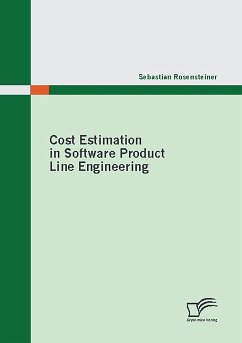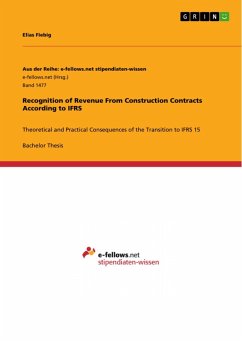
Critical risks in large construction projects and their consideration in cost estimation (eBook, PDF)
Financial Project Management

PAYBACK Punkte
0 °P sammeln!
Seminar paper from the year 2022 in the subject Business economics - Investment and Finance, grade: 1,5, University of Western Sydney, course: Financial Management of Projects, language: English, abstract: Early cost estimating has often become a major challenge in large projects. Budget overruns occur time and again, which leads regularly to conflicts between investors, project teams, contractors, and other stakeholders. The cause for these are several factors such as inadequate consideration of project risks, insufficient project information and an unclear project scope, or unforeseen projec...
Seminar paper from the year 2022 in the subject Business economics - Investment and Finance, grade: 1,5, University of Western Sydney, course: Financial Management of Projects, language: English, abstract: Early cost estimating has often become a major challenge in large projects. Budget overruns occur time and again, which leads regularly to conflicts between investors, project teams, contractors, and other stakeholders. The cause for these are several factors such as inadequate consideration of project risks, insufficient project information and an unclear project scope, or unforeseen project complexities. The following literature review, therefore, observes the risk identification of major construction and infrastructure projects as one of the major reasons for cost overruns. This review aims to deliver an overview of the different approaches to the identification of risks during the early stage of large projects. In this context, however, no rigid definition of the term "major project" has yet emerged. There is no fixed rule when a project is a major project and should be organized likewise. A major project is characterized by the fact that it differs from the client's usual projects in terms of its planning and implementation duration, its complexity, the large number of participants, or its high social significance. In contrast to small and medium-sized construction projects, where routine can be applied, extensive infrastructure and construction projects are often a multitude of different tasks with several interconnections and interfaces. They often require more complicated organizational structures, and accordingly many risk management requirements. Whether a project is considered a major project depends on the specific individual case. In these projects, decision-makers often rely on intuition, judgment, and their personal experiences to conduct risk assessments and cost estimates. Although various risk assessment models have been developed in recent years, the lack of precise and general data to examine risk effects usually leads to inconsistencies and inaccuracies in risk assessment. This often results in significant budget overruns for large construction and infrastructure projects.
Dieser Download kann aus rechtlichen Gründen nur mit Rechnungsadresse in A, B, BG, CY, CZ, D, DK, EW, E, FIN, F, GR, HR, H, IRL, I, LT, L, LR, M, NL, PL, P, R, S, SLO, SK ausgeliefert werden.













